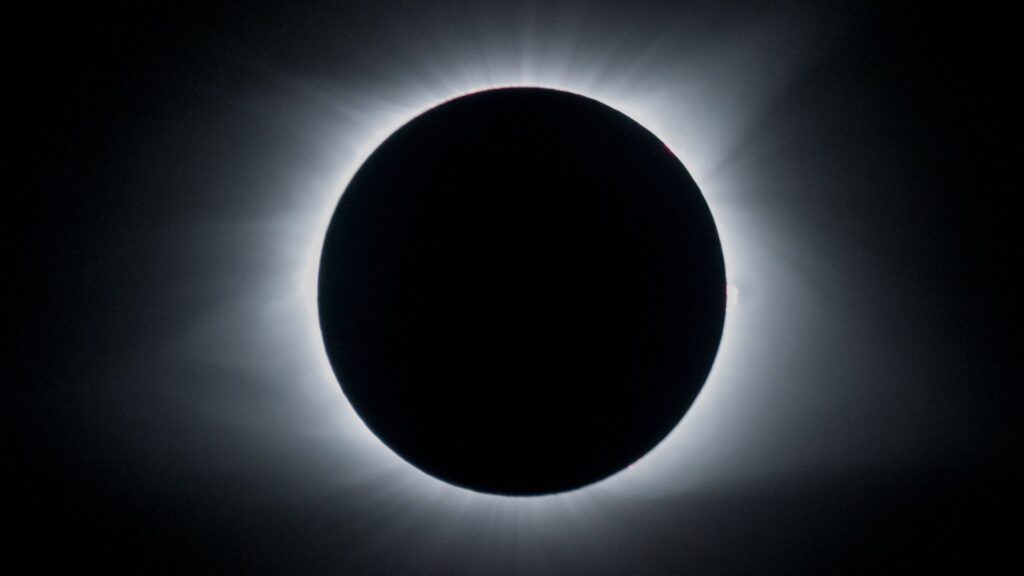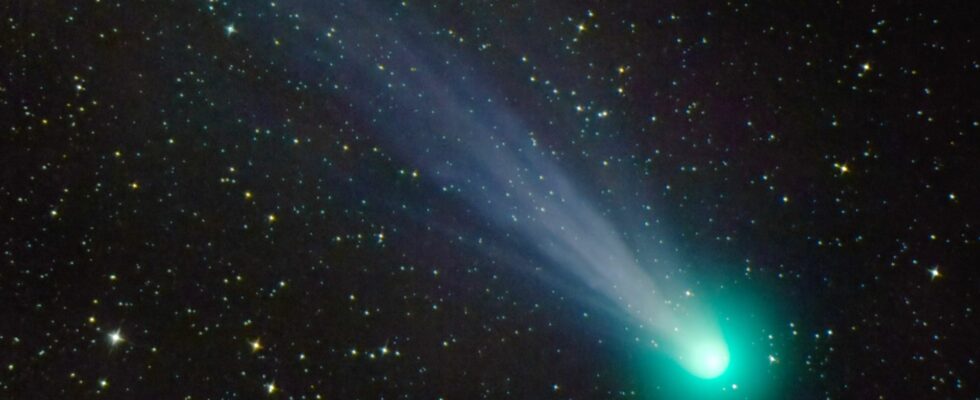Comet 12P/Pons-Brooks, nicknamed Devil’s Comet, could become visible to the naked eye. Its passage near the Sun roughly coincides with another rare astronomical phenomenon: a total solar eclipse.
A remnant of the solar system could sparkle in the sky very soon. As early as March or April 2024, the Devil’s Comet could become visible to the naked eye. Officially named 12P/Pons-Brooks, it owes its nickname of the devil’s comet to unpredictable explosions. For the moment, its visibility is not certain, but this comet seems rather promising.
The comet is expected to reach perihelion (the moment when it will be closest to the Sun) on Sunday, April 21. However, this date is not very far from that of another astronomical phenomenon: the solar eclipse of Monday April 8, 2024. “ The perihelion of the comet on April 21 will take place just two weeks after the total eclipse of April 8, which will place the comet in the sky of planet Earth at the same time as a totally eclipsed Sun », confirms a tweet from Astronomy Picture of the Day (a NASA site which presents a remarkable photo of the sky every day).

France will unfortunately not be in the visibility zone of this solar eclipse. You will have to be in North America to hope to admire the phenomenon. When a solar eclipse is total, like that of April 8, the entire solar disk is obscured by the Moon during the eclipse. We can then distinguish (with the adequate protection to watch the solar eclipse) the solar corona, which is the outermost layer of the solar atmosphere.
Comet photobombing during solar eclipse?
The April eclipse could therefore be even more special, if the devil’s comet appears during the show, carrying out a sort of celestial “photobombing”. According to Scientific American, the comet could appear at a distance of about 25 degrees (in astronomy, degrees are used to measure apparent distances between celestial objects). Again, it is absolutely not certain that 12P/Pons-Brooks is clearly distinguishable without an instrument during the totality phase of the eclipse.
When an eclipse is total, the sky is not completely darkened, as it can be during the night. However, according to the current knowledge we have of the comet, it could only be barely visible to the naked eye at the time of the totality of the eclipse. So you shouldn’t hope too much, nothing is guaranteed. However, comet 12P/Pons-Brooks is known for its spectacular flares, and may reserve one of these explosions for the eclipse period. We just have to wait to find out.
If you liked this article, you will like the following: don’t miss them by subscribing to Numerama on Google News.
